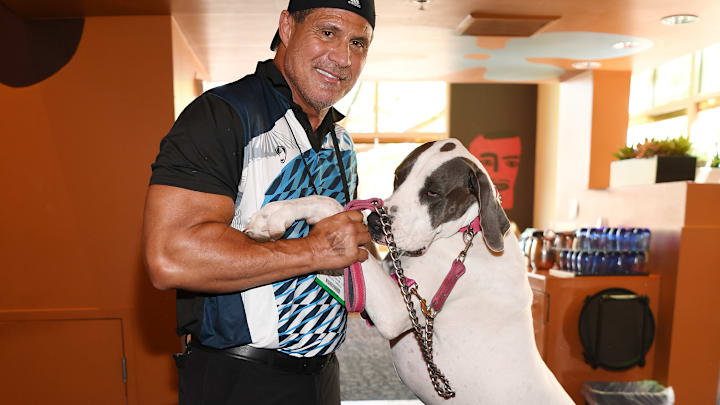A dog collar is more than a fashion statement. The right collar is crucial to your dog’s safety and comfort. While aesthetics is an important factor, there are several things to consider when buying a collar. Discover the various types of collars and a guide to help you find the right one for your pup’s unique needs.
Different Types of Dog Collars
Familiarize yourself with the various dog collars on the market.
Martingale Collar
Also known as the double-loop or Greyhound collar, it features a quick-release buckle, eliminating the need for constant readjustments. It has two loops — a large one that wraps around your pup’s neck comfortably and a small loop with a D-ring to attach the leash.
It’s loose without tension on the leash but tightens enough to prevent your dog from backing out of their collar. It’s ideal for slim-headed dog breeds and canines who can easily back out of a regular collar.
Quick-Release Collar
This is a flat collar with a plastic closure for quicker release. It’s adjustable and could fit snuggly around your furry friend’s neck. This type of collar is one of the most widely available in pet stores.
Tag Collar
A tag collar’s main purpose is identification. It’s a must-have if you always take your furry friend out for outdoor activities. It doesn’t have a buckle, making it more comfortable for dogs with slimmer necks. This collar can also help prevent the theft of your pup, as long as the tag contains your name and contact information.
Flea and Tick Collar
Fleas and ticks are parasites that feed on the blood of dogs. Aside from topical and oral medications, this type of collar has anti-parasitic medications that help kill parasites that land on your pet. Many collars can protect your dog against other pests, such as lice and mites.
Choke Collar or Chain
This type of collar is positioned at the top of your dog’s neck, making it easier to train your pup to walk on a leash. It has a control loop that’s pulled to tighten the fit. However, it may cause throat damage or irritation since it lacks features that prevent you or your dog from pulling the leash too tightly.
Head Halter
A head halter resembles a horse’s halter. The straps fit around the dog’s head — just behind the ears — and the other supports the muzzle. This type is ideal for large breeds that like to pull. It’s meant to guide your furry friend in the desired direction gently.
Body Harness
Harnesses are often seen on small dogs with delicate throats, offering more control than a traditional collar. However, they may make your pup more prone to pulling on the leash, requiring you to use more strength when walking them.
Do Different Breeds Need Various Dog Collars?
Dogs come in various shapes and sizes, and so should their collars. For instance, a martingale collar may be best suited for a dog with a head narrower than their neck.
Alternatively, what’s ideal for a fully grown canine might not be the best option for a puppy. For instance, puppies have more delicate bodies, making body harnesses a better choice. This type of collar can help distribute the pressure around the neck and body evenly. Get a Y-shaped harness that provides comfort and freedom of shoulder movement.
Guide to Choosing the Right Collar for Your Dog
Take the guesswork out of buying the right collar. Follow the guidelines below.
1. Measure Your Dog’s Neck
Measure your dog’s neck before purchasing a collar. Consider their fur length and how often they get groomed. For instance, if your canine companion has a long coat but gets trimmed regularly, an adjustable collar that can accommodate their neck’s measurement may be the best option.
2. Consider Your Dog’s Temperament and Size
What’s your dog’s walking etiquette? Do they enjoy slow walks or quick runs? Consider your dog’s build and walking behavior when looking for the best collar. If they pull a lot, they may benefit from a training collar, like a martingale or harness.
3. Evaluate Harness Design
Assess how hard your dog pulls. A front-hook harness gives you more leverage while walking with your dog, as it’s attached in front of your dog’s body. A back-clip harness may be a better option to reduce throat damage. Alternatively, a no-pull harness is more comfortable to hold, as it applies pressure to your pup’s chest to prevent pulling. Consider purchasing a harness with reflective stripes or patterns for your pup’s safety while walking at night.
4. Align With Your Dog’s Characteristics
If your furry companion is playful, a sturdier collar may be beneficial. If your dog has sensitive skin, consider choosing a collar made from softer or natural materials.
Shop for the Best Dog Collar
Choosing the right collar for your dog is crucial for its comfort and safety. Considering your pup’s size, breed and characteristics will help you find the ideal collar. Remember that the ideal one should provide optimum comfort for you and your dog.
